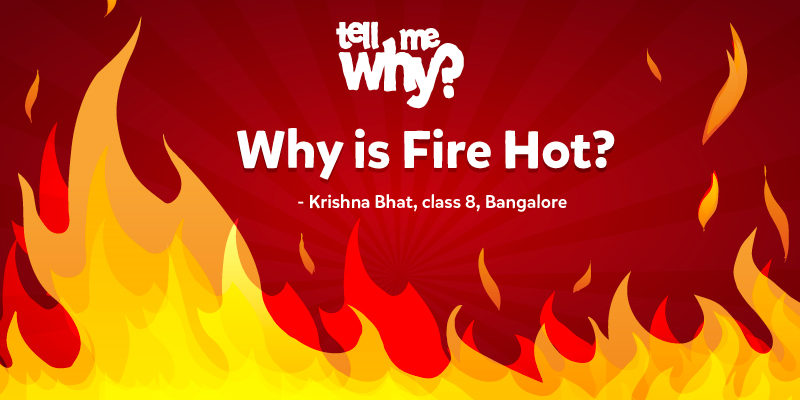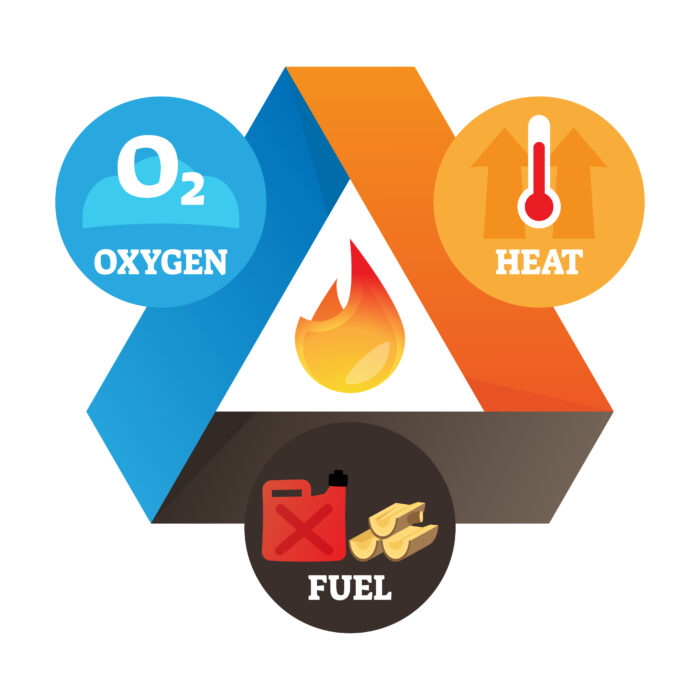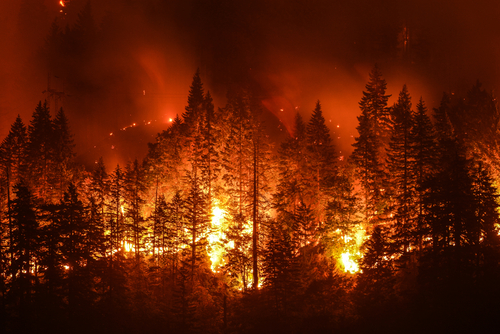
Welcome to BYJU’S ‘Tell Me Why’ where we explain the ‘why’ behind anything and everything that’s been on your mind! So go ahead and ask us a question that starts with ‘Tell Me Why’. We’ll pick the most intriguing questions and feature them along with an illustrated answer on The Learning Tree Blog.
To ask your question, fill up the form here:
Submit a ‘Tell me Why’ question
Today we are answering a very interesting question asked by class 8 student Krishna Bhat from Bangalore. He wants to know:

One of the things we like to do when it’s cold is sitting around a fireplace. We can drink hot chocolate, tell stories, and eat groundnuts. It’s so nice and warm!
But we have some very important rules about being around fires, don’t we? We know to never get too close to any kind of fire, or play with matches or the stove. We are sure a lot of you know these rules too!
The fire is very hot, which is one of the reasons we don’t go near it. And that heat is a form of energy. You might already know a little bit about energy. It’s the reason things move and change.
Everything needs energy. We get the energy we need from the food we eat, and we use that energy to move and change when we do things like playing and growing. The energy we use when we move is one type of energy.
Heat is a type of energy, too. That’s why we get so warm sometimes when we’re running around a lot! As we run, we use up some of the energy we got from our food, and we get warmer at the same time.
Fire is kind of like that, too! When something burns, like wood in a fireplace, it changes. It starts out looking like regular wood from a tree, and then after it burns it becomes all black.
Sometimes it also gets broken up into smaller pieces we call charcoal. As the wood changes, it uses up energy, and at the same time, it gives off heat. The heat that comes from a fire happens because of something called combustion.
That’s a big word, but it just means what’s going on when something is burning. For something to burn, or combust, three things need to happen. First, there has to be something to burn, like the wood in the fireplace. We call this fuel.
Second, there needs to be oxygen, which is a part of the air that’s all around us.
Fire isn’t the only thing that needs oxygen. We do, too! We take oxygen into our bodies every time we take a breath of air.
The third thing that fire needs is actually… heat! Yes, fire needs a little bit of heat to get started. If you’ve ever watched a grown-up light a candle on a birthday cake or start a campfire, they might have used a match.

It’s the heat from the match that gets combustion, and the fire, started! Then the fuel burns, and changes, and gives off much, much more heat than it started with from that tiny match. It’s using up lots of energy as it burns, and some of that energy comes out as heat.
But when the fuel in a fire is all burned up, there’s nothing left to change and give off heat. So, if all the wood burns up in our fireplace, the fire will go out. But while it’s burning, it’s very hot!
And now you know why: it’s because it’s giving off energy!
There is no single temperature for fire because the amount of energy that is released depends on several factors, including what kind of fuel we are burning, the availability of oxygen, and the portion of the flame being measured. A wood fire may exceed 1100° Celsius, but different types of wood burn at different temperatures.

Credit: Wikipedia
The colour of a fire is a rough gauge of how hot it is. Deep red fire is about 600-800° Celsius, orange-yellow is around 1100° Celsius, and a white flame is hotter still, ranging from 1300-1500 Celsius. A blue flame is the hottest one of all, ranging from 1400-1650° Celsius. The blue gas flame of a Bunsen burner is much hotter than the yellow flame from a wax candle!

Nothing can last forever – including a fire. Eventually, the fuel source will be exhausted and the heat will radiate away. Even the sun — which creates heat and light through nuclear reactions — will burn through its fuel in about four billion years. If we’re still around, expect all manner of chaos!
Even so, the truth about the world’s longest burning fires is so strange that it’s almost unbelievable!
Under the right conditions, fires can burn throughout entire ages of history. In fact, there are fires burning today that started before humans domesticated the horses.
Eternal flames fall into two categories; human-made fires and natural eternal flames.
Natural eternal flames can be caused by electrical discharge or accidental human activity, but the longest burning fires in the world are typically a result of lightning strikes.
And the oldest known natural eternal flame is at Mount Wingen, Australia – otherwise known as the Burning Mountain. The fire began in a coal seam that was struck by lightning at the surface, some 6,000 years ago. Today, the fire continues to burn 100 feet underground, slowly depleting the coal seam.

The Fires of Chimaera in Turkey have been burning for over 2,500 years
Another ancient fire burns in Turkey, at the site of what is believed to be Mount Chimaera – referred to as the origin of the mythical fire-breathing creature. The Fires of Chimaera have burned for over 2,500 years, and were once used as navigation beacons.
Thanks for joining us! Do you have questions about things that happen in the world around you? Click on the link below to send them to us!
Submit a ‘Tell me Why’ question
Also read, What would happen if oxygen doubled.
Raza has been writing since 2008, be it fiction, poetry, or articles on science, politics, and history. He believes that words can change the world, and he uses them to inspire and empower people through his writing. When he is not working, he is watching nature documentaries or playing with his cats.